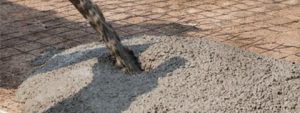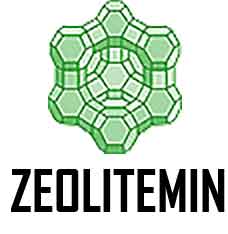Construction
Construction

Zeolite plays many roles in the construction industry including enhancing concrete and EMI shields, eco-safe paints and even vacuum insulated panels. Since ancient times, zeolite tuffs have been a widely used additive in construction materials. In the cement industry, natural zeolite is a popular pozzolan (reacts with calcium ions or calcium hydroxide in the presence of water) that is used as a cement blending material. Additionally, zeolite tuffs contain small pores and channels with large internal and external surface areas, a feature that allows them to absorb up to 30 percent of their weight in water (Markiv et al., 2014). Together, these properties provide zeolite additives with the ability to increase the compressive strength of concrete and enhance durability by reducing concrete permeability (Markiv et al., 2014).A number of studies have examined how to reduce the required amount of cement in concrete production, both from an economic and environmental standpoint. Natural zeolite is one raw material that has proven effective as a partial substitute for Portland cement.A trial by Sedlmajer et al. (2015) examined the properties of concrete containing natural zeolite as an active admixture in concrete.
Best benefits of zeolite in Construction
Zeolite as a molecular sieve is a natural mineral. The researchers composed individual concrete mixes based on gradual increases in the substitution of Portland cement with natural zeolite. All admixtures (containing zeolite) were compared to a reference concrete where only Portland cement was used (Sedlmajer et al., 2015). The dosage of zeolite, which contained 45 percent clinoptilolite and 35 percent of amorphous phase, ranged from 7.5 – 30 percent of the mass of the cement.The results indicated that zeolite is an active admixture that contributes to the formation of microstructure and to the improvement of required properties of hardened concrete (Sedlmajer et al., 2015). Researchers concluded that a “finely milled natural zeolite appears to be a suitable raw material in the production of concrete with which it is possible to partially substitute Portland cement” (Sedlmajer et al., 2015, p. 528).A paper by Jana (2007) examined clinoptilolite zeolite as a pozzolan and replacement to Portland cement in concrete mixtures.
Findings indicated that the most significant effects of zeolite are a reduction in chloride permeability, a significant reduction in expansion due to alkali-aggregate reaction, and an improved resistance to acid and sulfate attacks (Jana, 2007).Ahmadi and Shekarchi (2009) conducted an experiment that tested the effectiveness of zeolite and silica fume in enhancing mechanical and durability properties of concrete. They measured both pozzolanic reactivity and ability to substitute cement in different proportions in concrete mixtures. Experimental tests included slump, compressions strength, water absorption, oxygen performance, chloride diffusion, and electrical resistivity of concrete (Ahmadi & Shekarchi, 2009). The results indicated that concretes containing zeolite were comparable to or higher quality than concretes prepared with silica fume Ahmadi and Shekarchi (2009).
THE MAJOR BENEFITS OF ZEOLITE IN CONCRETE AND EMI SHIELD PRODUCTION
Water is the primary solvent for cement and ensures that materials like course aggregate, fine aggregate and additives mix evenly together. However, when water evaporates from concrete pores, it leaves behind void content that can ultimately decrease the final strength of the product.One solution to this problem has been to add siliceous and aluminous materials called pozzolans to cement mixes in order to prolong hydration time. The end result is an increase in the initial and final strength of concrete. Zeolite is a naturally occurring aluminum silicate and can be used as a highly effective pozzolan. Research shows that it consumes calcium hydroxide (CH) and creates a low-density C-S-H gel that fills void concrete pores left behind by evaporated water. This process increases the overall strength and uniformity of lightweight concrete.Research has also discovered that zeolitemin™s aluminum silicate composition provides it with electrical, chemical and thermal properties that reflect electromagnetic radiation. As a result, zeolite can be used in ink mixtures and paint compositions that form the protective undercoat of EMI shields. These barriers protect against disruptions to the operation of electronic devices when they come into contact with electromagnetic fields. Essentially, the use of zeolite in EMI shields protects against disturbances in equipment performance or the degradation and loss of important data.
APPLICATION SPECIFIC BENEFITS
| APPLICATION | BENEFITS |
|---|---|
| Lightweight concrete | – Lower in cost than other pozzolans including silica fume – Increases the compressive strength of concrete – Increases the durability of concrete – Improves chemical resistance in salt water applications – Resists underwater corrosion – Lowers emission of greenhouse gases during cement production |
| EMI Shields | – Highly cost effective – Improves insulation properties – Reflects electromagnetic radiation – Highly effective in conductive coatings, tiles and fabrics – Highly effective in conductive paints for antistatic coatings – Resistant to acids and alkalis – Not soluble in water or other solvents – Light weight, low density, and high particle strength |
